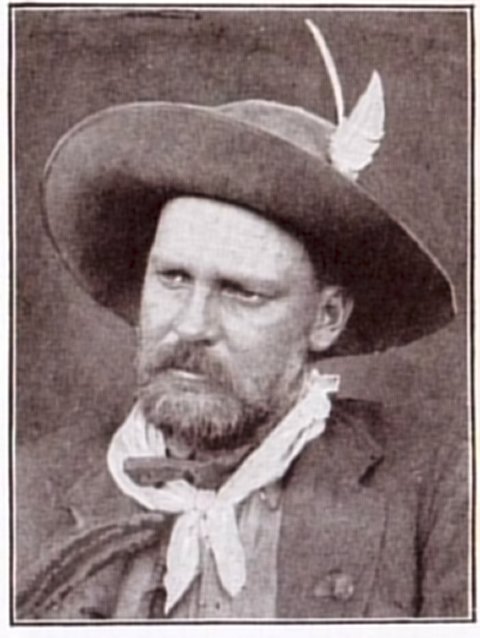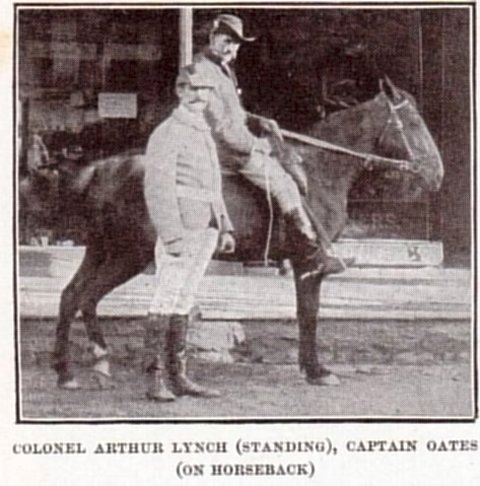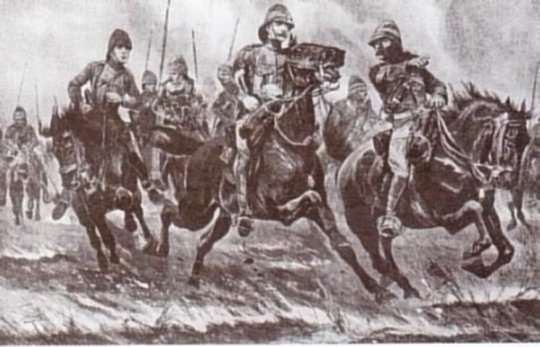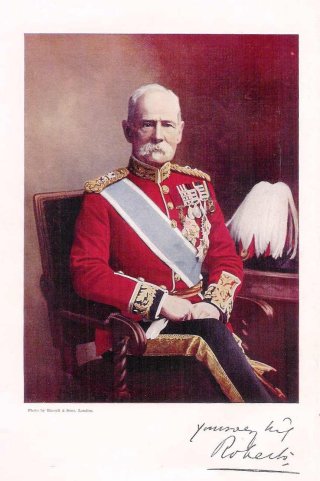


Newsletter No. 479
January 2016
In line with tradition, we had only one speaker at the December 2015 meeting, and were treated to a hilarious presentation by Professor Donal McCracken entitled “How the Irish won the Anglo-Boer War”. In typical impish manner, Prof McCracken began by saying that the Irish even believed that they had won the Battle of Waterloo. He then went on to introduce his audience to Irish several role-players in the Anglo-Boer War. Michael Davitt wrote an account of the War after visiting South Africa for only two months (without doing any fighting!), and it went from the first edition to the third edition.
The Irish Brigade was raised through the efforts of S Gillingham, J Gerraghty, PJ Oates, J Connolly and J Mitchell. These men felt obliged to support the Boer cause and were inspired to fight due to bitter hatred of Great Britain as a result of “...700 years of oppression of the Irish nation”! They used the war as an excuse to avenge the above and they referred to themselves as “The Avenger Corps”.

John Filmore Blake
The Irish Brigade led by John Filmore Blake, a Westpointer. He was assisted by two Majors – John MacBride and Thomas W Menton. Their rank structure included two captains – James Laracy and John J Mitchell and there was also an Afrikaner as Captain authority, by the name of C F Coetzee. They were elected to those positions of rank by ballot. Gilligan managed to acquire a bread concession for 50 people, which was quite coincidental because there were 50 men in the brigade!
Blake’s Brigade comprised 300 men from what was termed “The Irish and Irish Americans of Johannesburg and Pretoria”.
Two Brigades were eventually established; 1st was commanded by Blake (approximately 300 strong) and the 2nd (raised in January 1900) by Colonel Arthur Lynch (approximately 40 in strength).

MacBride was nominated to command the Irish unit but declined in favour of Blake. Lynch and Oates not only fought against the British; being an Irish outfit, the also fought amongst themselves.
After the Relief of Ladysmith on the 28th February 1900, the Boers withdraw to the Biggarsberg and the Irish played a significant role in attempting to check the British breakthrough at Helpmekaar on the 13th May 1900, when Lynch’s men set fire to the veld to delay the British advance.

The Irish Brigade then moved to Brandfort in the Orange Free State where they were joined by the 40 strong Chicago Irish-American Ambulance Corps under Captain Patrick O’Connor.
They tried to stop FM Lord Robert’s advance, then retreated to Johannesburg and thereafter Pretoria, with McBride and his men taking pot shots at the British as they entered Johannesburg, with several of them actually going into hiding in Fordsburg as the British entered the town.
Prof McCracken contended that the brigades’ greatest achievements were that they ‘blew things up, as they were so well trained to do.’
They then split into two, with MacBride leading one and Blake the other. On the 23rd September 1900 most crossed into Portuguese East Africa and were taken to Trieste. Blake remained and served with Generals Koos de la Rey & Ben Viljoen.
During the campaign, Blake’s Brigade lost 10 to 17 killed and 50 to 80 wounded. At least were 15 captured and sent to St Helena or Ceylon as Prisoners of War. Lynch’s Brigade ceased to exist by mid July 1900. One of the units had its own somewhat controversial flag, which featured a harp.
There were, of course, several Irish Regiments that fought with the British. They were as follows:
Prof McCracken also mentioned that several important Natal Colonial figures were of Irish descent. They included the Governor (Sir Walter Hely-Hutchinson), the Prime Minister (Lt Col Sir A H Hime), the Attorney-General (Sir Michael Galwey) and the Commander of the Natal Field Force, Lt Gen Sir George White VC (whose son founded the Irish Citizen Army in 1913). There were so many in fact, that there were sarcastic claims that Natal was an Irish Colony! Then, of course, the man who was tasked with ending the war, Field Marshal Lord Roberts was also a prominent Irishman from Waterford.

His parting ‘shot’ to the audience, therefore, was an explanation to the title of his talk: “How the Irish Won the Anglo-Boer War”. That was simple, he stated, because it wouldn’t have mattered who won; the Irish fought on both sides!
Professor Philip Everitt expressed the appreciation of the audience to Professor McCracken for a fitting way to end the Branch’s 2015 lecture programme – in typical robust and humorous vintage McCracken style. The audience then retired to the ‘ante room’ where we were treated to some fine wine tasting, kindly arranged by fellow member Peter Schneider.
Next Meeting
Thursday 21st January 2016 (NB: This is the third Thursday of the month; we’ll revert to the second Thursday in February 2016):
Darrell Hall Memorial Lecture: “Durban / Natal Sportsmen and World War 1”, by a team from Glenwood High School.
Main Talk: “The von Blücher Brothers and the Invasion of Crete”, by Adrian Nesbitt.
Thursday 11th February 2016 (NB – Back to the second Thursday of the month):
Darrell Hall Memorial Lecture: “Cpl John Joseph Davies' VC near Delville Wood”, by Donald Davies;
Main Talk: “The Polish Africans of World War 2” by Anthony Zaborowski
Thursday 10th March 2016:
Darrell Hall Memorial Lecture: “PT Boats at the Guadalcanal” by Roy Bowman
Main Talk: “General C R de Wet at Bothaville” by Robin Smith
Thursday 14 April
Darrell Hall Memorial Lecture: “From mirror shined boots to the spirit of the bayonet” by John Goodrich
Main Talk: “Iron Fist from the Sea” by Lt Col Douw Steyn
CENTENARY PILGRIMAGE TO DELVILLE WOOD. - Refer to the November 2015 newsletter for details or contact ken.gillings@mweb.co.za / 031 703 4828 / 083 654 5880